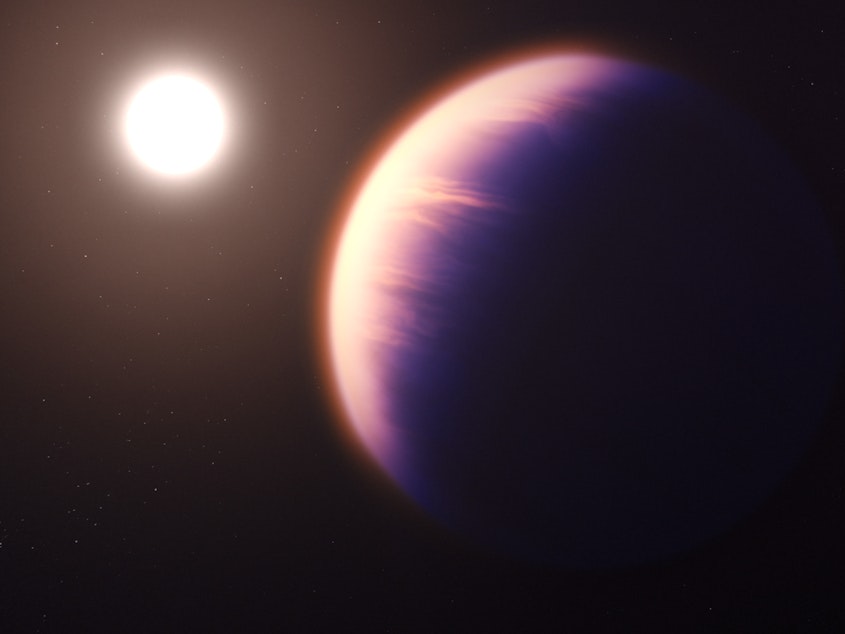The James Webb telescope shows how starlight transforms a distant, Jupiter-like planet

The James Webb Space Telescope has identified a rich mix of gases swirling in the skies of a hot, Jupiter-like world orbiting a star that's around 700-light years from Earth.
In addition to carbon dioxide, water, and other molecules, described in a series of new scientific papers published online, researchers say the telescope has spotted signs of sulfur dioxide.
That must have been produced by a chain of chemical reactions in the planet's atmosphere, sparked by light from the Sun-like star that this gas giant planet closely orbits, going around about once every four days.
"That's very exciting," says Jacob Bean, an astronomer at the University of Chicago.
He notes that reactions started by light are an important part of planetary atmospheres. In the Earth's atmosphere, for example, sunlight produces ozone that blocks harmful radiation from reaching the planet's surface. But this kind of chemistry had never been unambiguously observed in the atmosphere of a planet outside our solar system before.
Sponsored
Understanding how it works on other worlds "is going to be crucial for understanding life on other planets," says Bean.
Scientists have detected thousands of planets orbiting far off stars, almost always indirectly, by staring at stars with telescopes to see how they're affected by the presence of orbiting planets. In most cases, researchers know nothing about the planets other than the worlds' approximate size and distance from the star.
Sometimes, however, they've been able to get clues about planets' atmospheres, by analyzing the starlight that filters through. That's because different molecules absorb different wavelengths of light.
The Hubble Space Telescope, for example, discovered a surprising amount of water vapor in the atmosphere of this particular planet, called WASP-39 b.
So when NASA's new flagship telescope, the James Webb Space Telescope, launched in December, scientists were eager to peer at this planet to compare the view provided by their new instruments to what had previously been seen with Hubble.
Sponsored
"The Hubble observations have been confirmed, but we've gone so much deeper in understanding of this planet by revealing all these different molecules and being able to characterize their abundances much more precisely, and then to see things that we didn't really expect," says Bean.
"For example, the sulfur dioxide, that's not something we ever had a chance of seeing with Hubble," says Bean. "But it was quite easy and it just sort of fell out of these first James Webb observations."
In addition to detecting a host of different molecules in the atmosphere, astronomers also saw signs that this planet has a patchy, scattered cloud cover, he adds.
"It's not fully clouded over," says Bean. "It's always wonderful when we can learn something new about one of these kinds of planets that allows me to create, at least in my head, a better mental picture of what the planet looks like." [Copyright 2022 NPR]



